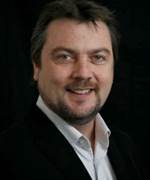Three CIOs incredibly passionate about their jobs - down to the impact that they have at the patient bedside - have been shortlisted as finalists for Healthcare CIO of the Year at this year's iTnews Benchmark Awards.

David Johnston, who during 2013 was CIO of the South Australian Department of Health, Greg Wells, who served as CIO of NSW Health, and Glenn Payne, CIO at aged care provider Feroscare, make up the select group.
In terms of the total submissions, we can say with confidence that 2013 was the year of the electronic health record. Two of our finalists - and several other high scoring entries - have created platforms that allow their state-based medical record systems to interface with the national Personally Controlled Electronic Health Record (PCEHR), a project which aims to usher in a new era of clinical collaboration.
Our third finalist centres upon another potentially transformative development in enterprise technology – telework.
The success of all three projects hinge on change management and stakeholder engagement. Even the most revolutionary technology will be rendered useless if its target users – whether they’re doctors or carers – choose to ignore it.
 |
David Johnston – SA Health This has enabled standardisation from the outset, and the potential to deliver an unprecedented capacity for sharing between hospitals and clinicians. The whole-of-state approach makes this a hugely ambitious project, which Johnston managed from funding stage through the build with passion and commitment. His investment paid off in August this year when the first EPAS site successfully went live. The judges noted: The submission made a great case for why electronic health records are important, and David Johnston's ability to articulate requirements has led to strong sponsorship up to the Ministerial level. The project wisely dedicated a healthy dose of the budget to engagement, training and adoption.
|
|
 |
Glenn Payne - Feros Care Feros Care operates aged care facilities across the country and has committed itself to a "no boundaries" approach to its work. Payne and his team have taken this sentiment to heart, rolling out a video-conferencing solution with an emphasis on usability and simplicity. Based on a detailled ROI calculation model, he says that the system has paid for itself within the first year of operation. Using a bit of foresight, Payne has also reinforced the solution with the necessary security to carry senstitive health records, which means the next job on his agenda is to leverage the system for telehealth purposes. The solution's quality has already been recognised in high places, with two Commonwealth grants funding its expansion into the telehealth space. The judges noted: This project offered one of the best articulated measurements of ROI and is a strong example of a not-for-profit pushing the boundaries. Telehealth has struggled to reach its promise and healthcare requires outspoken technologists like Glenn Payne to help sell the benefits to the community. |
|
 |
Greg Wells - NSW Health Wells and his team understand that when it comes to eHealth, systems are only effective when time-poor clinicians adopt them into practice. This has been the secret to HealtheNet, a clinical interface that pulls relevant data from a number of hospital-based systems and presents it to the doctor on a single screen. It also acts as the bridge between each hospital electronic medical record and the PCEHR. Clinical behaviour is notoriously hard to change, so Wells has tackled this challenge by minimising the difference. For example, the link to HealtheNet appears automatically to a doctor in their native system, whether they work in emergency or radiology. “The doctor does not need to know about the technical smarts that are bringing this information to their desktop,” he said. The success of a federally funded pilot has been enough to convince the state to fund the roll-out right across NSW. The judges noted: HealtheNet was a pragmatic and well thought-out answer to the PCEHR opportunity. Deploying the same software as the national scheme proved fruitful, as was attempts to narrow the scope of the pilot to those with the greatest need to prove out the value. The securing of further funding from NSW Health to progress beyond the trial provides a strong indication of project success. |
|
Special thanks to our sponsors: The Australian Computer Society, Dimension Data Learning Solutions and Samsung.


_(20).jpg&h=140&w=231&c=1&s=0)

_(22).jpg&h=140&w=231&c=1&s=0)




_(26).jpg&w=100&c=1&s=0)

 iTnews Executive Retreat - Security Leaders Edition
iTnews Executive Retreat - Security Leaders Edition












_(1).jpg&h=140&w=231&c=1&s=0)



